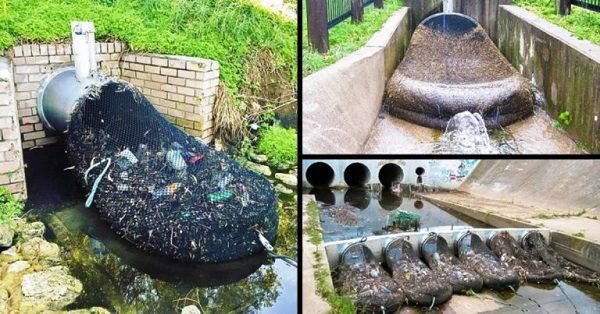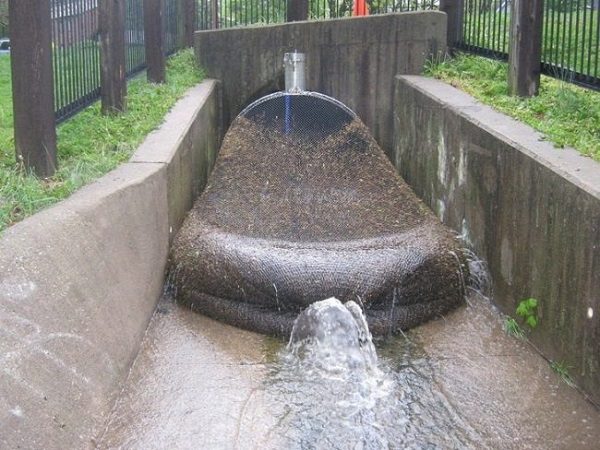The National Geographic states the following:
"Each year, an estimated 18 billion pounds of plastic waste enters the world's ocean from coastal regions. That's about equivalent to five grocery bags of plastic trash piled up on every foot of coastline on the planet".Furthermore, it reports the devastating state of the oceans including the environment. The coral reefs are smothered in bags, turtles gagging on straws, whales and seabirds starving their bodies as due to the bits of plastic there is not enough place for real food, and so on.
The plastic that is discarded mainly comes from single-item use and around 40% of it ends in the oceans. Many companies are recycling the plastic, but that is less than a fifth of all plastic, so there is the need for new innovative solutions to improve this condition.
It continues:
"New research is emerging apace about the possible long-term impacts of tiny pieces of plastic on the marine food chain — raising fresh questions about how it might ultimately impact human health and food security."One of those new inventions is definitely the filtration system in the Henley Reserve that has been installed by the authorities from the Australian city of Kwinana. They have installed a net that is being placed on the outlet of a drainage pipe thereby catching large debris and preventing the contamination of the environment. These pipes drain water from the harmful litter and trash in the residential areas and releasing it clean in the natural areas. In this way the environment is being protected from all the harms that the modern life brings. Plus the drainage system is often being polluted by all the debris that is often washed away by heavy rains, and this new system prevents that pollution as well.
Since it was a fairly new project, the city authorities first installed two nets, but seeing its efficiency, catching over 800 pounds of garbage within several weeks, they decided to install more. Even though the installation and manufacture of these nets is pricey, (around $10,000 per net), the overall system is pretty profitable and offers substantial cost savings. These nets contributed to less pollution in the surrounding environment and thus protected the wildlife.
After the nets become full, they are being lifted up and the trash is thrown into special garbage collecting trucks that are later on brought to a trash-sorting center. When the trash is removed the nets are brought back to their locations. In this centre the waste is being separated into non-recyclable and recyclable material.
The implementation of this filtration system is maybe a small step but very important one in protecting our environment.
Source:
beyondblindfold.com








Reader Comments
Quote :
( After the nets become full, they are being lifted up and the trash is thrown into special garbage collecting trucks that are later on brought to a trash-sorting center.) from there they get shipped out to some other country and end up back in the sea.
fucking ludicrous. I figure 1200 dollars for the modified culvert end and 20 bucks for a net. or you could just make a bolt on collar for around 120 dollars.
ludicrous.
So simple yet effective.
4 out of 5 comments by seemingly world class net makers slamming the cost of the nets without even knowing what they're made out of.
Way too many keyboard warriors on this site nowadays.
they were around $80 a piece back then, with a volume discount you could reduce that by almost 30% or $24 a piece.
So take the $56 dollar a piece cost and if you could empty the catch end and use them twice, (as you can with these if you pay attention to the picture) it brings the cost (25 years ago) to a rate of around $20 per use.
The price of the collars comes straight from the cost of the public works dept. making a similar collar device All you pay for is materials and a pittance of labor, NOT a huge markup for specialty equipment.
You would just be paying extra wages.
This is not a new technique in any way shape or form,
How do you empty the nets? With a bucket scoop. SMFH. takes like ten minutes. The municipal workers can handle it easily. You undo the effluent end and lift up the collar with the bucket scoop and the debris all falls out into a dump truck (that the public works dept. should already own).
Since all of the storm water goes through the wastewater plant in that municipality they opted to get a better head gate screen to remove all of the solid waste. It gets rolled up into solid waste "biscuits" in a compactor machine that self cleans to a large extent.
These nets are really only useful for diverted streams or culverts that empty straight into water ways.
Most municipalities in the US DO NOT have water ways like this due to environmental regulations.
So in the US this could be implemented on a county level, not city level. On a county level it is a good idea.
I am not an uneducated keyboard warrior wannabe net expert. I actually speak from personal experience in the field, and with very similar nets in question.
Thanks for not only being ignorant on the matter yourself, but also assuming everyone else must be even more ignorant. I really needed a good laugh..
if a solution to any problem is worthwhile for the results and benefits for people , creatures and the environment, the funding can always be found. The US finds over $700 billion annually for never ending wars for what?
It is our society's obsession with money and profits which has got us the world we have today: the MIC being the biggest employer in the world, the elite controlled banking system which makes profits for itself at the expense of everyone else, big pharma which would see us all permanently doped (and never cured) for profit, and big agri which has destroyed the very nutrients of the soil needed to grow food which will sustain our own life forces. Obviously there is more.
Why is money the guiding force to determine what happens and how we live in this world we share? When will we start to put people, the environment, and our resources at the forefront of all decisions?
fiscal imprudence is intolerable. Qualms over this are about governments being fiscally imprudent, not concern over profit or expense.. If they are wasting that much money on a net how much are they blowing on everything else while at the same time they are creating more and more revenue streams through new taxes, and increased revenue through higher taxes.
What is wrong with asking them to try and make due with being fiscally prudent?
Where do you think money comes from from little municipalities and county governments?
When resources used do NOT add up to benefit due to price gouging, it is very irresponsible to not ask your government to come up with an analogous solution that is more cost effective if possible.
That people DO NOT think this way is why the governments CAN spend trillions of dollars on never ending wars.
These systems have worked well for bio-degradables but are are not so effective againgst plastic waste that needs to be removed from the flow.
Leaf fall, tree branches and decaying dead carcasses in the water flow alter the tisane to look, taste and smell like rotting, stewed tea and this seems to provide a feast for micro critters that shouldn't be in the water and certainly not in overwhelming quantities.
The vortex in the water solved a problem with clogged trees in the forestry business.
"Comprehend and copy Nature"
[Link]
I used to love drinking spring water in a pond that was like that in the fall.
maybe that is why i have an iron immune system?
"A person who lives a hundred years ahead of his time doesn't understand the present and the present doesn't understand him. One sees things completely differently, one speaks a language that is foreign to today's scientists. Now after so many years we have an alternative that is going to have such an immense impact: economically, politically, socially, and more.
I would even say that this will initiate a new age of evolution".
Aren't we about a 100 years in his future?
But what happens? I've got Satellite radio randomly playing and what comes up as I type the above? Oasis . (in caps, as you wrote it.) Song: .Supersonic.*
R.C.
*I think it means that I'll have an earth saving epiphany.. not. But kinda cool.
* English should adopt that ‘before word characters"like the upside-down exclamation mark, (whatever it and similar are properly called), along with the upside-down Q mark, ( ¿ ) as they work to inform the reader or talker that ‘this’ oncoming sentence needs the inflection of an exclamation and/or question, resulting in better communication.